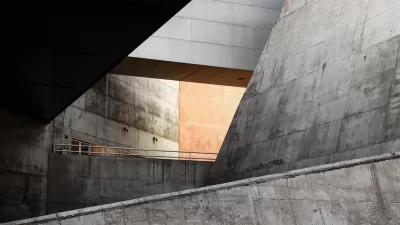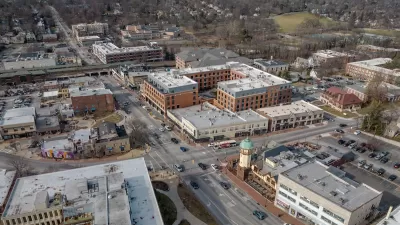Walmart stores -- once vilified by cities for their impact on local smaller retailers -- are now getting the red carpet treatment from some urban cities. Walmart has adapted its store design, and cities need the tax revenue from large retailers.
Urban downtowns have become the "last frontier" for big-box retailers. Where big-box retailers were once blocked from locating urban cities, the trend is changing. Walmart's focus on green practices, its adoption of fresh and healthy food initiatives, a willingness to abandon its suburban big box design approaches, and many cities' need for new tax revenues has enabled the company to make substantial inroads in urban areas across the country. In addition, many commercial real estate companies are benefiting from acquiring the 30,000-to-270,000-square-foot spaces where value retailers were previously not welcome.
Joel Groover writes in the December, 2011 issue of Shopping Centers Today: "Indeed, Walmart appears eager to take advantage of this newfound openness among cities toward discount retail. Rather than hunt for acreage on the outskirts of major metropolitan areas, the company is pushing to build smaller-format concepts within the city limits of such dense population centers as Chicago, Miami, New York City and Washington, observers say. Thus far, the discounter has announced plans to build a total of nine stores in Chicago alone. The first of these, a 10,000-square-foot Walmart Express, opened in the Chatham neighborhood of Chicago's South Side in July. Unlike in years past, local criticism of these plans was muted, Weinstock says, and the new store is already doing well."
Another excerpt from the article:
"For their part, big-box retailers are just as eager to find new customers, even if that means letting go of their attachment to suburban development models, McMahon says. Indeed, the stalled housing market and the oversupply of retail in the suburbs and exurbs has made cities all the more attractive to big-box stores, he says. "We now have 1.1 billion acres of vacant retail, mostly in big-box stores out on the strip, and some people believe that up to 300 million square feet of that will have to be demolished or repurposed," McMahon said. "Retailers are figuring out that inner cities are the one place in America with more spending power than stores. For the big-box industry, our downtowns are the last frontier."
"Best Buy, HHGregg and Home Depot have also been taking advantage of these lowered entry barriers in urban markets, McMahon says. Increasing flexibility with regard to store formats and sizes, a trend that has been growing for years now, has helped make the transition easier, he says. "The new Home Depot in Vancouver [British Columbia] has five stories of condo on top of it," McMahon said."
[Editor's note: This article is only available to members of the International Council of Shopping Centers (ICSC), who have access to the publication, Shopping Centers Today. Planetizen's policy is to curate articles our readers can access on the Web. However, in some cases -- when we feel an article is particularly relevant to the urban planning community -- we let our readers know about the article even if it is not available for free. Let us know what you think of our policy.]
FULL STORY: Love at second sight

Alabama: Trump Terminates Settlements for Black Communities Harmed By Raw Sewage
Trump deemed the landmark civil rights agreement “illegal DEI and environmental justice policy.”

Planetizen Federal Action Tracker
A weekly monitor of how Trump’s orders and actions are impacting planners and planning in America.

Why Should We Subsidize Public Transportation?
Many public transit agencies face financial stress due to rising costs, declining fare revenue, and declining subsidies. Transit advocates must provide a strong business case for increasing public transit funding.

Understanding Road Diets
An explainer from Momentum highlights the advantages of reducing vehicle lanes in favor of more bike, transit, and pedestrian infrastructure.

New California Law Regulates Warehouse Pollution
A new law tightens building and emissions regulations for large distribution warehouses to mitigate air pollution and traffic in surrounding communities.

Phoenix Announces Opening Date for Light Rail Extension
The South Central extension will connect South Phoenix to downtown and other major hubs starting on June 7.
Urban Design for Planners 1: Software Tools
This six-course series explores essential urban design concepts using open source software and equips planners with the tools they need to participate fully in the urban design process.
Planning for Universal Design
Learn the tools for implementing Universal Design in planning regulations.
Caltrans
Smith Gee Studio
Institute for Housing and Urban Development Studies (IHS)
City of Grandview
Harvard GSD Executive Education
Toledo-Lucas County Plan Commissions
Salt Lake City
NYU Wagner Graduate School of Public Service





























